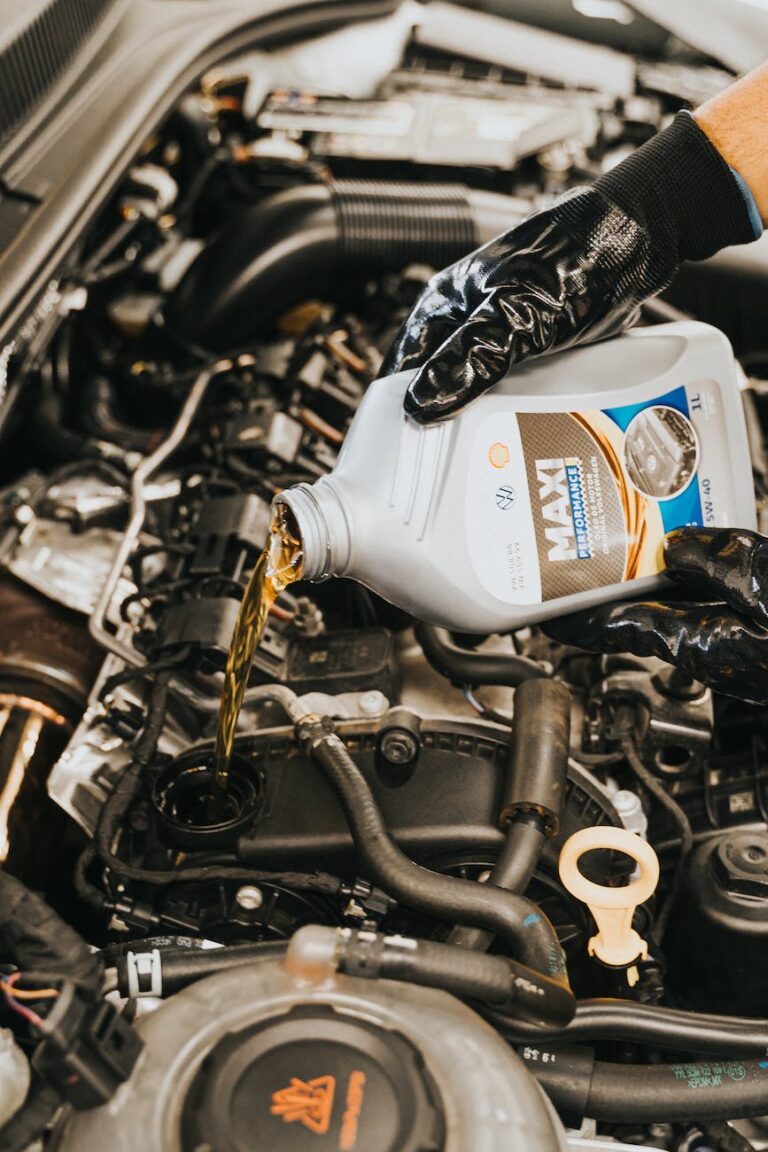Understanding Spongy Brakes
When it comes to vehicle safety, the braking system plays a crucial role. A soft or spongy brake pedal is a cause for concern as it can compromise vehicle performance and safety on the road. Understanding the causes and symptoms of spongy brakes is essential for prompt diagnosis and necessary repairs.
What Are Spongy Brakes?
Spongy brakes refer to a condition where the brake pedal feels soft and lacks the expected firmness when pressed down. Instead of a solid and immediate response, the pedal may sink with little resistance. This can be alarming for drivers, as it reduces the confidence and control they have over their vehicle’s braking ability. Spongy brakes are typically an indication of a problem within the braking system that requires attention and repair.
Symptoms of Spongy Brakes
Recognizing the symptoms of spongy brakes is crucial for identifying the issue and taking appropriate action. Here are some common indicators to watch out for:
-
Sinking Brake Pedal: A primary symptom of spongy brakes is a brake pedal that sinks or feels soft when pressure is applied. Instead of a firm and responsive feel, the pedal may depress further than usual, sometimes reaching the floor, before engaging the brakes.
-
Need to Pump Brakes: Another sign of spongy brakes is the need to repeatedly pump the brakes to slow the vehicle down. This occurs because the initial press on the pedal does not provide the desired braking response, necessitating additional pumping to achieve the desired effect.
-
Brake Warning Light: If the brake warning light on the dashboard remains illuminated, it can be an indication of a problem within the braking system. Spongy brakes can trigger this warning light, alerting the driver to a potential issue that requires attention.
If you notice any of these symptoms while operating your vehicle, it is important to address the issue promptly. Soft or spongy brakes can not only compromise your ability to stop the vehicle effectively but also pose a safety risk on the road.
To diagnose and fix spongy brakes, it is recommended to seek professional brake services. A trained brake mechanic can assess the braking system, identify the underlying cause, and perform the necessary repairs or replacements. Delaying brake repairs can lead to further damage and potentially more expensive repairs down the line.
In the following sections, we will explore common causes of spongy brakes and the steps involved in fixing them. Stay tuned to learn more about how to address this issue and ensure your vehicle’s braking system is in optimal condition.
Common Causes of Spongy Brakes
When you experience spongy brakes, it’s essential to identify the underlying causes to ensure your safety on the road. Several factors can contribute to a soft brake pedal, including:
Air in the Brake Line
One of the most common causes of a spongy brake pedal is air in the brake line. When air enters the brake system, it can prevent brake fluid from flowing properly, resulting in a soft or spongy pedal feel (NuBrakes). To address this issue, a process called “bleeding the brakes” is performed to remove the air and restore proper hydraulic pressure. This can be done through DIY brake bleeding or by seeking professional brake services from a qualified mechanic.
Low Brake Fluid
Insufficient brake fluid can also lead to spongy brakes. If the brake fluid level in the master cylinder reservoir is low, there may not be enough fluid to generate the necessary hydraulic pressure to engage the brakes effectively. Regularly checking and maintaining the brake fluid level is crucial to ensure optimal brake performance. If you notice a significant decrease in brake fluid, it may indicate a leak in the brake system, which should be addressed promptly.
Leaking or Damaged Brake Lines
Corrosion, rust, or physical damage to the brake lines can result in small holes or cracks, leading to brake fluid leakage (Wagner Brake). This loss of fluid compromises the hydraulic pressure needed to engage the brakes, resulting in a soft or low brake pedal. Regular inspections and maintenance of the brake lines are crucial to identify and address any signs of damage or corrosion promptly. If you suspect a brake line leak, it’s important to consult a professional mechanic to perform a thorough brake inspection and repair.
Worn-out Master Cylinder
The master cylinder is a critical component of the brake system responsible for generating hydraulic pressure. Over time, the master cylinder can wear out, leading to leaks, both externally and internally from a damaged piston seal (Wagner Brake). This loss in hydraulic pressure can result in a soft or spongy brake pedal. If you suspect a worn-out master cylinder, it is recommended to seek professional brake services for inspection and potential replacement.
Issues with ABS Modulator
The ABS (Anti-lock Braking System) modulator is responsible for regulating hydraulic pressure during braking. If there are issues with the ABS modulator, such as a faulty valve or solenoid, it can disrupt the normal flow of brake fluid and lead to spongy brakes. Diagnosing and repairing ABS modulator issues requires specialized knowledge and equipment. Therefore, it’s best to consult a qualified brake technician for assistance.
Misalignment in Rear Brake Shoes
In vehicles equipped with rear drum brake systems, misalignment in the rear brake shoes can contribute to spongy brakes. Corrosion inside the wheel cylinder can cause brake fluid leakage, leading to a loss of hydraulic pressure and a soft or spongy brake pedal (Wagner Brake). Regular adjustment and maintenance of the rear brake shoes are recommended to ensure proper alignment and functionality.
Faulty Brake Booster
The brake booster plays a crucial role in increasing the force applied to the brake pedal, allowing for easier and more effective braking. If the brake booster is faulty or not functioning correctly, it can result in a soft or spongy brake pedal. Identifying and repairing brake booster issues should be done by a professional brake mechanic to ensure the safety and reliability of the braking system.
When dealing with spongy brakes, it’s important to address the underlying causes promptly. Regular brake maintenance, inspections, and seeking professional brake services can help diagnose and resolve these issues effectively, ensuring your brakes perform optimally and provide reliable stopping power when you need it most.
Fixing Spongy Brakes
When faced with a soft or spongy brake pedal, it’s important to take prompt action to ensure your safety on the road. Here are some effective methods for fixing spongy brakes:
Pumping the Brake Pedal
One of the initial steps in diagnosing and potentially resolving spongy brakes is to pump the brake pedal. By gently pumping the pedal multiple times, you can check for any loss of pressure or inconsistency in the pedal response. If the pedal becomes firmer after a few pumps, it may indicate the presence of air in the brake system.
Investigating Fluid Leaks
Visible brake fluid leaking from a port or fitting is a telltale sign of a brake fluid leak, which can contribute to a soft pedal. Leaks may occur due to damaged brake lines, worn-out seals, or deteriorated components. It is crucial to identify and repair these leaks promptly to restore the integrity of the brake system. If you notice any fluid leaks, it is recommended to consult a professional brake service provider to address the issue properly.
Bleeding or Flushing the Brakes
One of the most common causes of spongy brakes is air in the brake system. Bleeding or flushing the brakes is the necessary solution to remove excess air and restore optimal brake performance. This process involves systematically releasing air trapped in the brake lines by opening and closing the brake bleeder valves.
To perform this procedure, you will need a brake bleeding kit, which typically includes a clear tube, a container for collecting fluid, and a wrench for loosening the bleeder valves. It is important to follow the specific bleeding sequence outlined in your vehicle’s manual to ensure proper execution.
Alternatively, you can seek the assistance of a professional brake service provider to perform a thorough brake system inspection and carry out the bleeding process for you. They have the expertise and specialized equipment to efficiently remove air from the system and restore the brake pedal’s firmness.
Remember, proper maintenance and regular brake service are essential to keep your brake system in optimal condition. If you experience persistent issues with spongy brakes or are unsure about the appropriate course of action, it is always advisable to consult a qualified brake mechanic for a comprehensive diagnosis.
By addressing spongy brakes promptly and effectively, you can ensure the safety and reliability of your vehicle’s braking system.
Seeking Professional Brake Services
While there are certain steps you can take to address spongy brakes, sometimes it’s best to seek professional brake services. Professionals have the expertise and tools to diagnose and fix the underlying issues causing the soft brake pedal. Two options for professional brake services are mobile brake repair services and a professional inspection.
Mobile Brake Repair Services
If you’re unable to visit a brake repair shop or prefer the convenience of having a mechanic come to you, mobile brake repair services are a great solution. Companies like NuBrakes offer mobile brake repair services where their mechanics come directly to your home or workplace to inspect and fix spongy brakes (source). This eliminates the need for you to travel to a repair shop and allows the mechanic to work on your brakes in a familiar environment.
Mobile brake repair services typically offer a range of brake services, including brake pad replacement, brake line repair, brake rotor replacement, brake fluid flush, and more. By choosing a reputable mobile brake service provider, you can ensure that your brakes are professionally inspected and repaired without the hassle of visiting a physical location. To find a mobile brake repair service near you, check out our article on brake service near me.
Importance of Professional Inspection
While some brake issues can be addressed with simple troubleshooting and maintenance, others require the expertise of a professional brake mechanic. A professional brake inspection is crucial in identifying the root cause of spongy brakes and determining the appropriate course of action to fix the problem.
During a professional inspection, a brake mechanic will thoroughly examine your brake system, including the brake lines, brake pads, brake rotors, brake calipers, and other components. They will use their knowledge and experience to identify any issues or potential problems that may be causing the soft brake pedal. This may include checking for brake fluid leaks, inspecting the brake booster, assessing the condition of the brake pads, and more.
By opting for a professional inspection, you can have peace of mind knowing that a trained expert is assessing your brake system. They can provide accurate diagnoses, suggest the necessary repairs or replacements, and ensure that your brakes are functioning optimally. To schedule a professional brake inspection, reach out to a reputable brake repair shop in your area.
In summary, seeking professional brake services, such as mobile brake repair or a professional inspection, is essential when dealing with spongy brakes. Whether you choose the convenience of mobile brake repair services or prefer a comprehensive inspection at a brake repair shop, professionals can diagnose and address the underlying causes of a soft brake pedal, ensuring your safety on the road.







